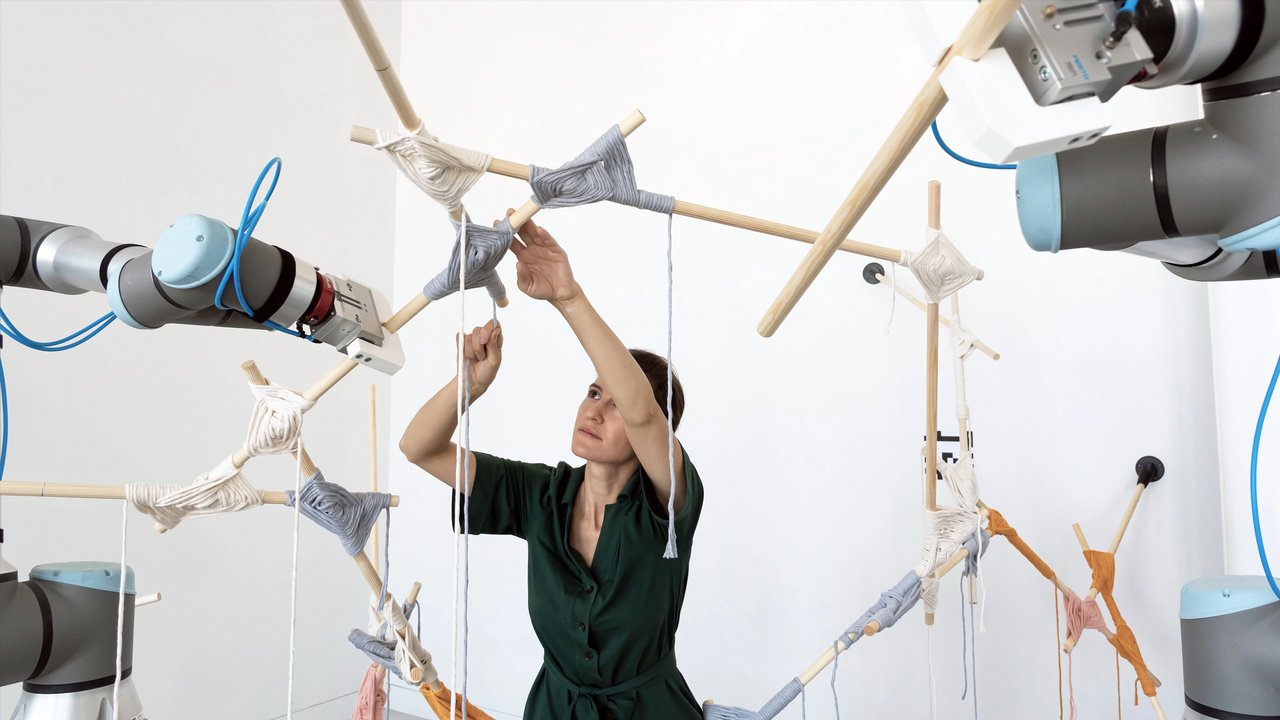
Computational Design and Fabrication
The interdisciplinary seminar "Computational Design and Digital Fabrication" aims to bridge fundamental principles of geometric computation and structural design and use these insights to develop new algorithms and tools for robotic fabrication in architecture. At the interface of the disciplines of architecture, structural design and engineering, and digital fabrication, students are taught innovative computational design solutions for advanced digital construction techniques at various scales.
The aim of the course in the summer semester of 2023 is to explore the formal and constructive potential of reciprocal frame structures and the potential of cooperative human-robot teams for the in-place assembly of such structures. In this context, we will deal with the computational design of a reciprocal frame structure using digital form-finding and generative growth algorithms. For fabrication, we will deploy a centralized cloud-based task manager to coordinate both humans and robots to carry out assembly tasks. At the end of the seminar, the full-scale production of a prototype of this canopy structure is planned in the Collaborative Construction Laboratory of TUM. This structure will be exhibited at the Future of Construction Symposium in September 2023.
The seminar is carried out as a block course (2 x 1-week blocks) and divided into two parts:
Part 1 - Computational Design
Part 1 teaches digital form-finding techniques, integrating the digital fabrication methods of multi-robot assembly as part of the shape generation for a canopy structure. In the beginning, the basics of computational geometry and theoretical aspects of computational design and digital manufacturing are taught. A computational design tool is presented and demonstrated using exercises. This design tool is used by the students to customize and complete the task of designing a reciprocal frame structure. At the end, all design projects are presented and discussed. Methods of robotic path planning and control will be taught through the planning and assembly with the collaborative mobile robots.
Part 2 - Computational Fabrication
Part 2 aims to upscale a selected design and fabricate a 1:1 scale demonstrator. In the cooperative assembly workflow, two collaborative robots will take turns placing building elements and stabilizing the structure, while humans will place custom mass-produced connectors. Using a custom mobile AR interface, integrating task manager and robot control into one consistent augmentation system, humans and robots will share a digital-physical workspace in which digital spatial data will inform humans and robots and facilitate cooperative assembly routines. In doing so, we aim to negotiate the levels of task distribution and coordination and to reinvent the fundamental relationship between humans, skilled workers and designers, machines, and robots. The structure will be realized in the Collaborative Construction Laboratory of TUM and exhibited at the Future of Construction Symposium in September 2023.
Teaching Team
TUM
Chair of Structural Analysis (Prof. Dr.-Ing. K.-U. Bletzinger, Dr.-Ing. Majid Hojjat)
Professorship of Structural Design (Prof. Dr. Pierluigi D’Acunto, Frederic Chovghi)
Professorship of Digital Fabrication (Prof. Dr. Kathrin Dörfler, Lidia Atanasova)
ETH Zürich
Gramazio Kohler Research (Daniela Mitterberger)